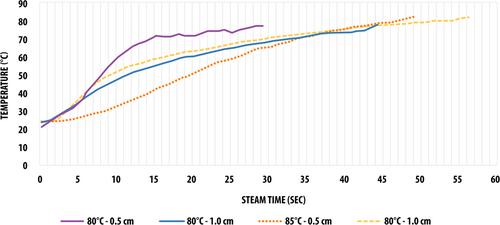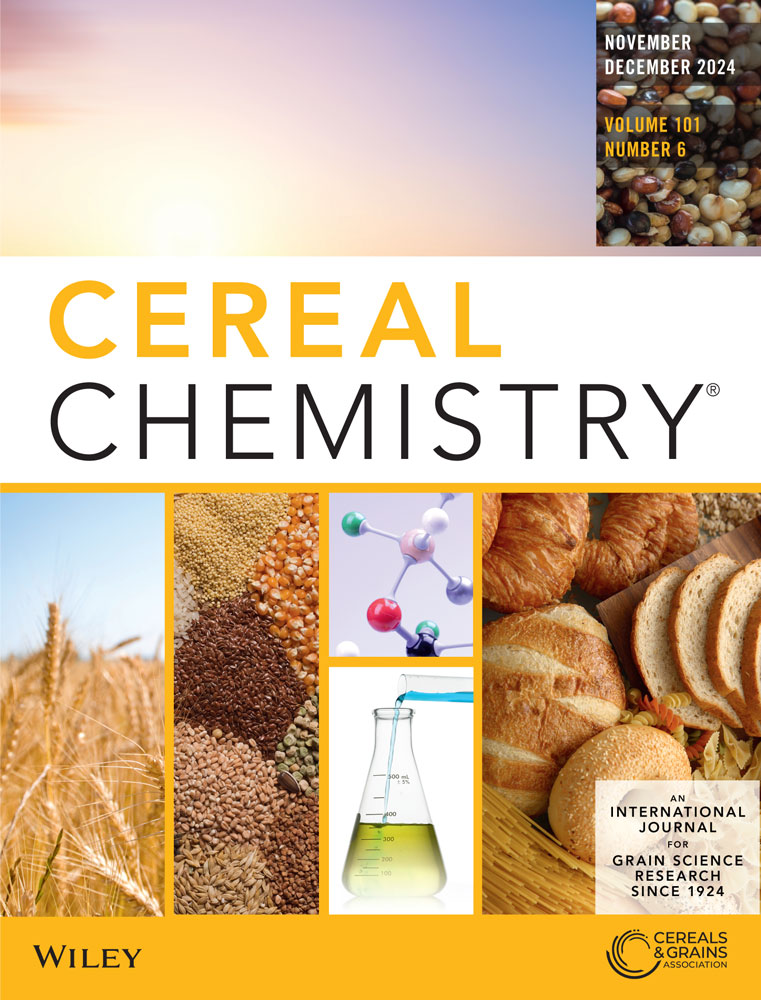Even though wheat-based products are a low-moisture food, and most of the finished products are thermally processed, there have been several reported outbreaks associated with wheat flour. The objective of this study was (a) to evaluate the effect of steam alone or in combination with lactic acid, to reduce the natural microbial load of hard red winter wheat, and (b) to evaluate the impact of these interventions on the functional properties of hard wheat flour.
Hard red winter wheat was treated by adding acid to the tempering water, steaming the kernels, or adding a combination of both. Samples were placed on sieves (bed depth 0.5 and 1.0 cm) for those treatments where steam was included and then treated in a steam table until grain temperature achieved 80°C and 85°C. After treatment was applied, wheat was allowed to temper to 15.5% moisture. The combination of acid and steam achieved the highest overall microbial reductions, with 4.0, 4.1, and 4.3 log CFU/g, for APC, Eb, and coliforms, respectively. When flour functionality was evaluated, the interventions applied resulted in some minor differences for individual parameters associated with pasting properties, baking performance, and bread image analysis.
The addition of lactic acid and steam effectively enhanced the microbiological quality of hard wheat and the consequent flour, with no compromise in its functional properties.
This research addresses the food safety concern of microbial contamination in wheat flour and introduces a novel method involving lactic acid and steam treatment to significantly reduce microbial loads without compromising the flour's functional properties.



